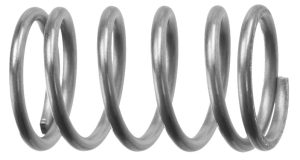
Springs are mechanical devices that, when exposed to a force, store energy. You can find them in engines, tools, locks, machines, furniture, toys and countless other products. While most people are familiar with the basic design of a typical spring, however, there are some common myths about springs, including the following.
All Springs Are Stiff
While many springs are stiff, others are soft. Also known as low-rate or light springs, they are used in low-force applications. All springs will be exposed to a force during use. Low-rate or light springs are used specifically in applications where the spring will be exposed to minimal force.
They Are a Modern Invention
Springs are not a modern invention. While it’s unknown exactly when they were invented, some of the earliest recorded uses can be traced back thousands of years. They were originally used in bows, and springs were later used in door locks and other devices. Regardless, springs aren’t a modern invention. They’ve been around for thousands of years.
All Springs Become Shorter When Exposed to a Force
Another common myth is that all springs become shorter when exposed to a force. Some springs do, in fact, become shorter under load, but others become longer.
There are compression and extension springs. They both feature a coiled design, and they are both designed to store mechanical energy. Only compression springs, though, become shorter under load. Compression springs are designed to compress when exposed to a load, meaning they become shorter. Extension springs, on the other hand, are designed to extend when exposed to a load, meaning they become longer.
All Springs Are Coiled
Don’t assume that all springs are coiled. Compression and extension springs both feature a coiled design, but flat springs live up to their namesake by featuring a flat design.
Flat springs are made of machined and wound stock metal. They are typically used in conjunction with bolts or similar threaded fasteners. Flat springs will store mechanical energy while simultaneously exerting a force against the fastener with which they are used. This force will protect the fastener from vibrations.
Only Available in Metal
Most springs are, in fact, made of metal. Common types of metals in which they are made include stainless steel, carbon steel and aluminum. But you can find springs made of other materials.
Gas springs are often made of plastic or similar synthetic materials. They feature a cylinder of compressed gas, which they use to store mechanical energy. Gas springs can function like compression or extension springs, but they don’t feature a coiled design.
